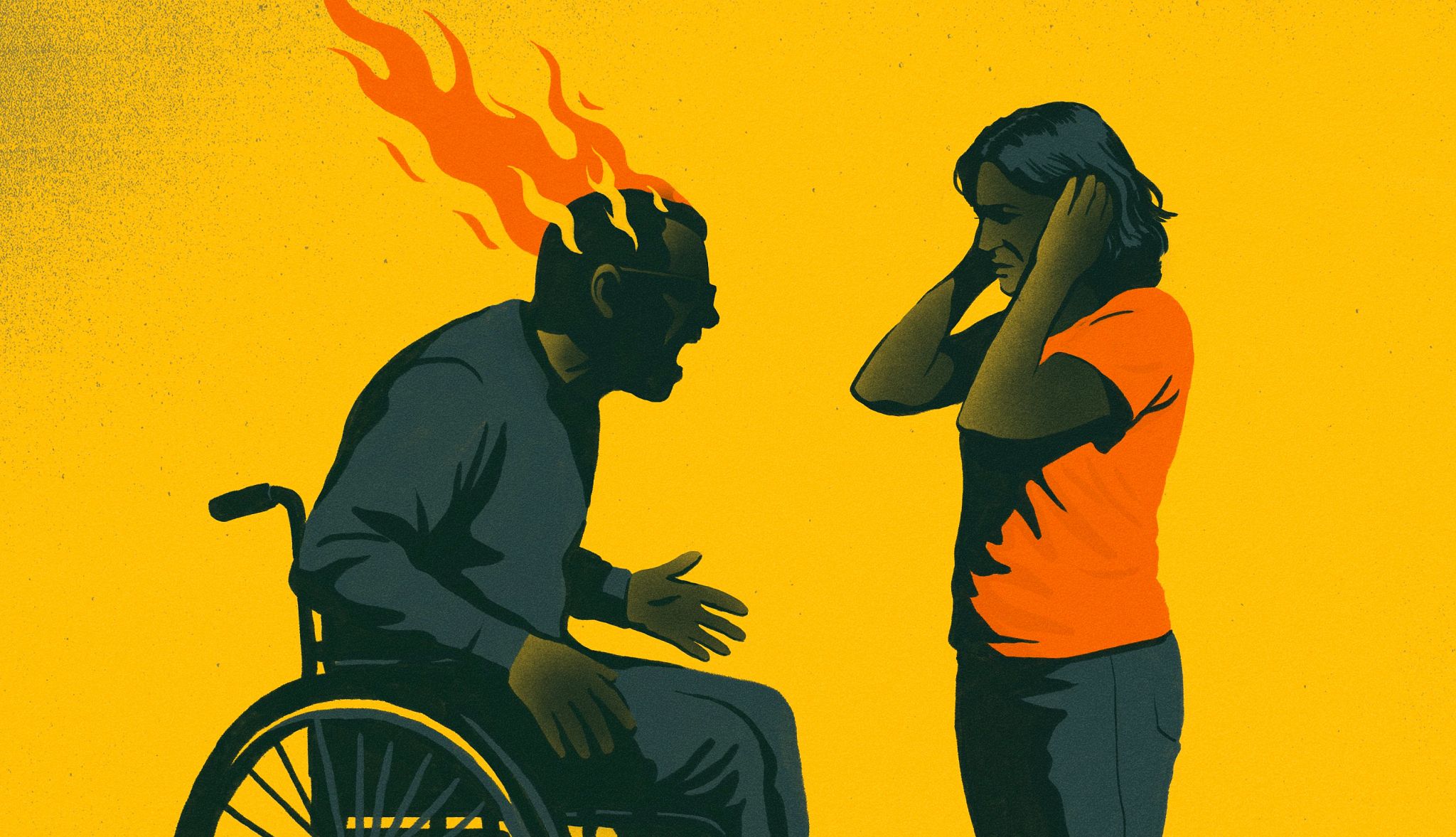AARP Hearing Center


Laurel Wittman and Eddie Lopes met in 2001, five years after he was diagnosed with multiple sclerosis (MS) at 23 years old. At the time, Lopes was still mobile and working as a real estate developer for adult communities. But his physical decline was swift, leading him to rely on a wheelchair three years later; he became a quadriplegic within a decade. Despite health challenges, they were in love and tied the knot in 2005. Alongside the physical deterioration, however, Lopes developed significant cognitive and emotional issues, including profound anger and rage.
Wittman initially approached Lopes’ outbursts as though they were typical marital problems, attempting couples therapy and improved communication strategies. Unfortunately, these efforts proved futile due to the underlying neurological causes of his anger. “This was the beginning of an unpredictable time in our marriage that no conventional solution could easily solve,” says Wittman, copresident of the Well Spouse Association, which provides support for spousal caregivers. “His rage nearly destroyed our marriage and almost led to a divorce because his anger became harder to cope with than other aspects of his MS.” Lopes is now 51, and his anger has softened as his cognitive abilities have declined. “He has less energy to fight, so there’s a lot less conflict, and that’s made a positive difference in our relationship,” says Wittman.
Understanding the roots of rage
Anger and aggressive behavior are common in people with chronic diseases and can significantly strain relationships with caregivers, family and friends. These outbursts can happen anywhere — at home, a nursing home and in public.
“Chronic illness often brings out anger in people because it can be a multifaceted issue. It might stem from the disease process itself, difficulty communicating need or even side effects from medications,” says Badr Ratnakaran, M.D., chair of the American Psychiatric Association’s Council on Geriatric Psychiatry and assistant professor and division director of geriatric psychiatry at Virginia Tech Carilion School of Medicine in Roanoke, Virginia. “Additionally, the loss of independence and changes in daily life that come with chronic conditions can lead to immense frustration and anger.”
A 2021 study in the journal Neurology Clinical Practice found that 18 percent of caregivers reported physically aggressive behavior among people living with advanced Parkinson’s disease. A separate analysis of 17 studies found that about 28 percent of people with Alzheimer’s disease show aggressive behavior, such as hitting and yelling, compared with about 7 percent of those with mild cognitive impairment.
“Individuals with cognitive impairment may experience frustration and confusion due to memory loss, communication difficulties and the inability to perform daily tasks. This frustration can manifest as anger or aggression,” adds Ratnakaran.
Often, anger is a secondary emotion, a reaction to something deeper. It can mask feelings of fear, anxiety, sadness or a sense of helplessness. “Taking a moment to identify what’s truly triggering the rage can be empowering,” says psychologist Deborah Derrickson Kossmann, author of Lost Found Kept: A Memoir. “Understanding the source of the anger and frustration is the first step toward addressing it effectively.”
Wittman adds: “Knowing that anger is often a part of the disease and not a personal failing can be the most comforting, yet hardest, truth for a caregiver to hear and accept.”
Common causes of anger
Anger in people with chronic conditions can stem from many causes, ranging from anxiety, cognitive decline and communication issues to infections, medication side effects and physical pain. Ratnakaran, Derrickson Kossmann and other caregivers recommend paying close attention to these eight causes of anger issues.

































































More From AARP
Patrick Dempsey Recalls the Stress of Caregiving
Patrick Dempsey recently shared his experience with being a caregiver for his mother, who had ovarian cancer for 17 years
Caregiver Tips for Feeding Loved Ones
Caregivers tailor meals to nourish and bring joy
Planning Ahead as Unmarried Caregivers
Secure your future caregiving role with legal documents